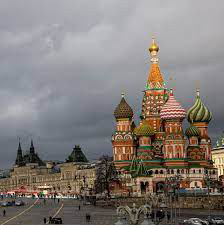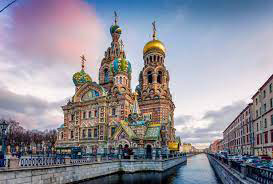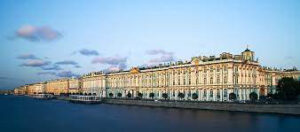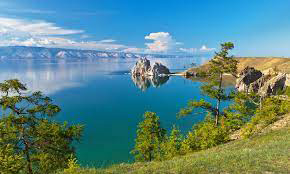Moscow
The origins of Moscow, the heart of Russia’s political, economic, cultural, and scientific life, date back to 1147, when Prince Yury Dolgoruky welcomed his relative, Prince Svyatoslav Olgovich, to a small castle nestled amidst the vast Russian wilderness. In the 12th century, this site transformed into a fortress; by the 13th century, it grew into a bustling town. By the 15th century, it was the capital of the Russian State. Today, Moscow’s deep history, stunning architecture, and treasure troves of art have placed it at the center of global currents shaping the world. Visitors from across the globe are drawn to Moscow’s grandeur and the allure of the largest empire’s capital on earth.
Saint Petersburg
Saint Petersburg, although relatively young compared to historic European capitals, has gained tremendous historic significance in a short time. Founded in 1703 as a crucial seaport for Russia’s future, Saint Petersburg was hailed as «a key for paradise» for the Russian Empire. The city’s name honors Saint Peter, the key-bearer to paradise according to the Holy Bible. Today, Saint Petersburg stands as a central hub for culture, science, and industry in Russia, hosting hundreds of museums and exhibition halls. The city’s beauty has inspired countless Russian and foreign artists, poets, writers, and composers, immortalizing it in their works.
The State Hermitage Museum
The State Hermitage ranks among the world’s largest art museums, attracting countless visitors who dream of exploring its collections. The museum complex spans seven buildings, including the Winter Palace, the Small Hermitage, the Great (Old) Hermitage, the New Hermitage, the Hermitage Theatre, the Menshikov Palace, and the General Staff Building. The State Hermitage’s vast collection, initiated by Empress Catherine II in 1764 and continually expanded since, includes around three million works of art and cultural monuments from around the globe. The museum offers a comprehensive view of world art from the Stone Age, with displays including Egyptian and Ancient Greek halls, Scythian and Chinese art halls, and expositions of ancient Russian art. The museum’s treasures also encompass vast numismatic collections, jewelry galleries, and masterpieces of European art, including works by Leonardo da Vinci, Titian, Caravaggio, Rembrandt, Van Dyck, Rubens, Giorgione, Gainsborough, and many others. The State Hermitage Museum offers a range of services for locals and tourists, including lectures, excursions in various languages, and special tourist programs, with special provisions for disabled visitors.
The museum offers a comprehensive view of world art from the Stone Age, with displays including Egyptian and Ancient Greek halls, Scythian and Chinese art halls, and expositions of ancient Russian art. The museum’s treasures also encompass vast numismatic collections, jewelry galleries, and masterpieces of European art, including works by Leonardo da Vinci, Titian, Caravaggio, Rembrandt, Van Dyck, Rubens, Giorgione, Gainsborough, and many others. The State Hermitage Museum offers a range of services for locals and tourists, including lectures, excursions in various languages, and special tourist programs, with special provisions for disabled visitors.
Baikal Lake
At 25 million years old and 1,700 meters deep, Baikal Lake is the oldest and deepest lake in the world, containing about 20% of the world’s total freshwater reserve. Situated in the South-Eastern part of Siberia, Baikal Lake boasts stunningly clear waters and a rich biodiversity, with over 1,700 species of plants and animals. In 1996, Baikal Lake was recognized as a UNESCO World Heritage Site.



